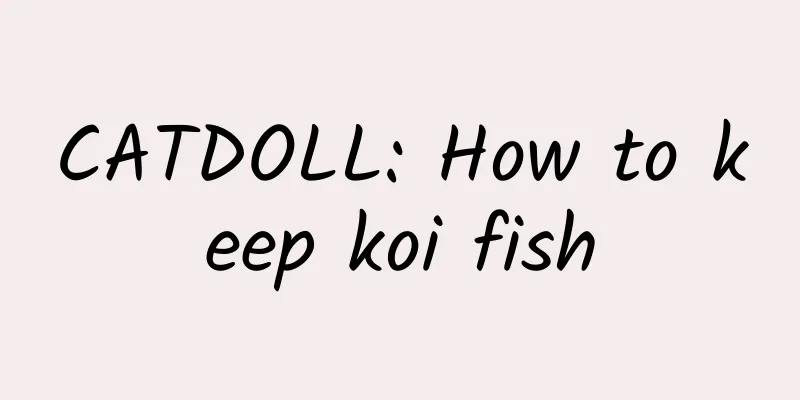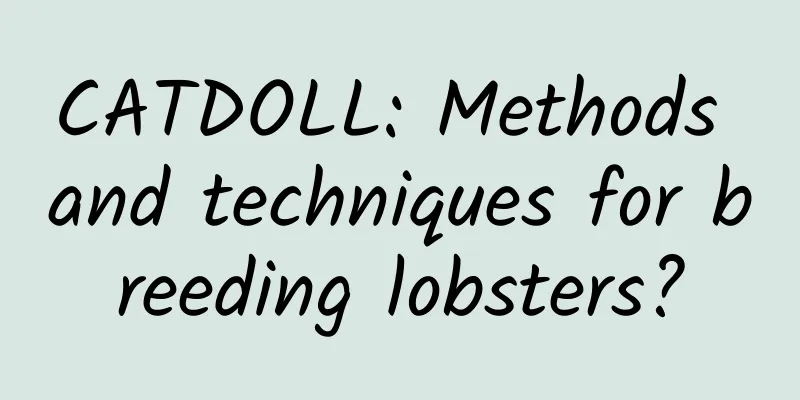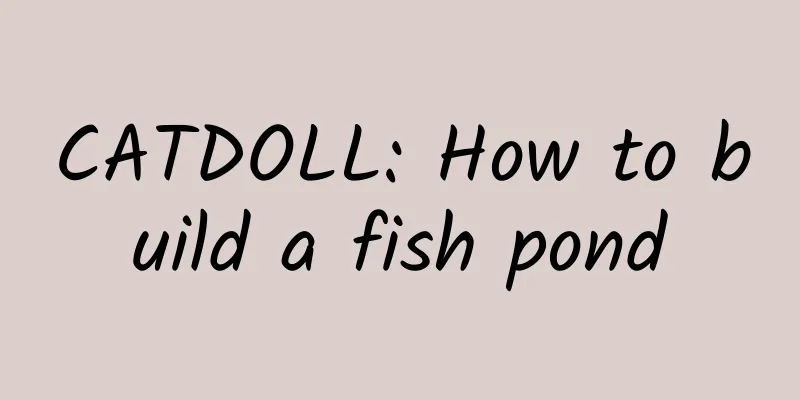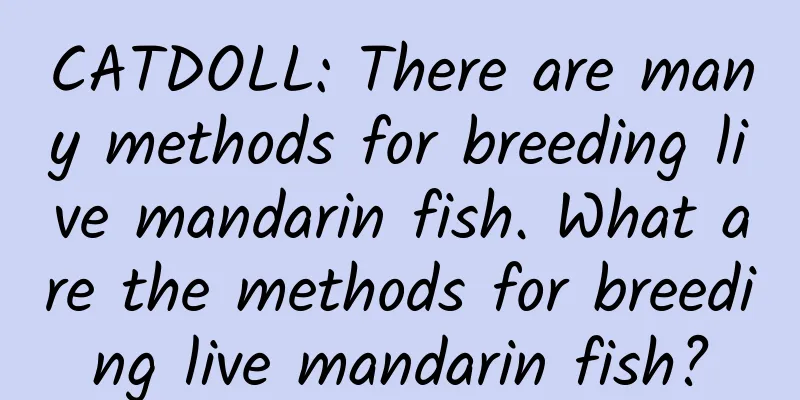CATDOLL : CATDOLL: How to keep koi fish

|
The charm of koi is self-evident. If well-raised, they are "moving works of art", but if not, they are "rustic". I bought a few koi last week and raised them directly on the balcony in a large turnover box, with 8 koi in it. One black carp, one golden carp, one white carp, one tricolor carp, and four red and white carps. The small one is about 6 cm, and the big one is about 10 cm. The most expensive one is no more than 15 yuan, and they are basically discarded. I originally thought that not all of them would survive, but now, a week later, they are still alive and kicking. I have to say that koi have a strong ability to adapt. However, it is easy to keep them alive, but it is not easy to keep them well. If you have friends who want to raise koi, you can write down the following 9 important breeding points for reference. (1) What are the main varieties of koi? Traditionally, Kohaku, Taisho Sanshoku, and Showa Sanshoku are the three most representative varieties of koi, collectively known as the "Gosanke". Together with the Shokoi, they are also known as the "Daishike". These four are the main varieties of koi for appreciation. Kohaku is considered the foundation of koi appreciation. Once you understand Kohaku, it will be easier to appreciate other varieties. However, after hundreds of years of continuous hybridization, improvement and breeding, more than 100 varieties have been bred. The Japanese authoritative organization "Love Scale Association" divides the existing koi into 13 categories: red and white, Taisho Sanshoku, Showa Sanshoku, writing carp, beika, light yellow, clothing, light writing, gold, patterned skin light carp, gold and silver scales, red crown, and variant carp. It is worth mentioning that the Tu Pao itself is also a koi, but it does not meet the ornamental standards and its appearance is rather ordinary, so it is called Tu Pao. (2) The size of the water body for raising koi Koi are large ornamental fish. Those with good genes can grow to more than 1 meter. Therefore, the size of the water body is the first condition for raising koi well. As the saying goes, "deep water breeds big fish." It is not recommended to raise koi in fish tanks with a water volume of less than 500 liters and a water depth of less than 50 centimeters. As for koi ponds, the principle is to make them as large as possible. The pond can be built according to the terrain conditions, but the water depth should not be less than 1 meter at least. Note that keeping the koi alive and keeping them well are two different concepts. If you just want to keep them alive, you can basically keep them alive well by using a turnover box like I did and a better filter. (3) What kind of filtration system is needed for a fish tank that raises koi? Koi eat a lot and excrete a lot, so they are considered high-polluting ornamental fish, so the requirements for the filtration system are relatively high. Generally speaking, at least the following three requirements must be met: a. The bottom suction pump can suck the feces cleanly; b. Can effectively filter out impurities such as feces and leftover bait; c. The fish tank filter biochemical chamber should not be less than 15% of the water body. (4) What do koi fear the most? Koi are very adaptable to water quality and can survive even without being trapped in water. However, koi are most afraid of sudden changes in water temperature. When the water temperature suddenly rises or drops by about 6 degrees, koi may die immediately. Therefore, when changing water, be sure to control the temperature difference and do not exceed 3 degrees. In addition, excessive ammonia nitrogen and nitrite content in the water can also cause koi poisoning, and in severe cases can lead to direct death of koi. Therefore, the next point 5 is very important. (5) How to improve the effect of biological filtration? Biological filtration generally refers to microbial filtration, which cultivates nitrifying bacteria, denitrifying bacteria, photosynthetic bacteria and other microorganisms to degrade harmful substances in water. Many people mistakenly believe that nitrifying bacteria can "eat" fish feces. In fact, it is not true. Photosynthetic bacteria are the ones that "eat" fish feces. Nitrifying bacteria can degrade ammonia nitrogen and nitrite in water, which is a key link in our fish farming water treatment. Nitrifying bacteria are widely present in nature. As long as a certain period of time, they will be generated in the fish tank by themselves, but the speed is very slow. Therefore, most people will choose to add nitrifying bacteria preparations. Normally, the water temperature is between 15 and 30 degrees, and the water body has sufficient dissolved oxygen, the nitrifying bacteria are more active, and the degradation effect is better. In addition to nitrifying bacteria, there are also effective microbial preparations such as denitrifying bacteria, photosynthetic bacteria, Bacillus, lactic acid bacteria and EM bacteria, which all play an important role in improving water quality. It is worth mentioning that the filtration system cannot be used and stopped at times, which will affect the reproduction and growth of beneficial microorganisms such as nitrifying bacteria. If conditions permit, enlarging the biological filter tank and adding more filter materials can improve the filtration effect. (6) Is sunlight important for koi? Sunlight helps koi absorb calcium and produce pigments, so sunlight is very important for koi. If you want koi to have brighter colors, you need enough sunlight. If there is no sunlight, you can choose white or pink halogen lamps with a color temperature of more than 6000K and guaranteed quality for auxiliary lighting. Generally speaking, if you want Koi to grow fast and maintain bright colors, you need more than 50% light every day. (7) Is it necessary to feed Koi with special feed? If you want to keep Koi well, you must feed them with special feed. Koi feed is generally divided into five types: growth, growth, color enhancement, germ, and staple food. In addition, Koi like to eat live bait, but live bait may cause harm to Koi. As the name implies, each feed has its own function, and it should be fed according to the temperature. When the water temperature is below 20 degrees, it is recommended not to feed body growth and color enhancement feed; when the water temperature is below 20 degrees, it is recommended to feed germ feed. Currently, the feed information on the market is uneven. Using inferior feed may cause harm to koi. To raise koi well, you must choose good feed. (8) How to prevent Koi from getting sick? Although Koi are relatively easy to raise, they are also prone to getting sick. Generally, newly introduced Koi should be quarantined first. If conditions permit, it is best to isolate and observe them for 1 to 2 weeks. If there are no problems, they can be placed in the main fish tank for breeding. Remember: there is no panacea. Prevention is always better than cure. Don't use medicine as soon as the fish is sick. You may kill the fish before it dies of the disease. Prescribing the right medicine and using the right dosage is one of the prerequisites for cure; however, even if the medicine is used correctly and the dosage is correct, the water must be kept clean, with sufficient dissolved oxygen and a stable water temperature. All regulations are rigid, and the treatment process requires medication based on specific circumstances. At this time, experience becomes very important, which requires accumulation. Sea salt may be the best medicine for preventing diseases and treating minor illnesses. If your koi are always sick, you can look for the cause from factors such as stocking density, filtration system performance, feeding amount, water quality control, and quarantine of new fish. (9) What should I do if green algae grows in the koi fish tank/pond? Green algae are harmless to koi if there is sufficient dissolved oxygen, but they may reduce the ornamental value. If the fish are raised in a small water body fish tank, a closed flow-through UV sterilizer lamp can be used to kill the green algae spores; if the fish are raised in a large water body koi pond, the fertility of the water can be controlled, or algaecides and other methods can be used to remove the green algae. By the way, if it is green algae on the wall of an outdoor koi pond, unless you have obsessive-compulsive disorder, it is recommended not to remove it, just keep the water body with sufficient dissolved oxygen. The key points of raising koi are the above 9 points (the first point is basic knowledge, which is necessary to understand). If you have better suggestions, please feel free to add them. Especially for beginners, I believe the above 9 points will be helpful to you. |
<<: CATDOLL: Why is seaweed purple-red?
>>: CATDOLL: What do bream eat?
Recommend
CATDOLL: Parasites that attach to sea snail shells
1. Parasites attached to sea snail shells It shou...
CATDOLL: Artificial breeding of large yellow croaker
There are currently a variety of farming models f...
CATDOLL: How do centipedes reproduce?
How do centipedes reproduce? The centipede's ...
CATDOLL: Do abalone grow in the sea?
yes Abalone is a very valuable seafood. It is not...
CATDOLL: How much does silk cost per pound in 2020 (How much does silk cost per pound in 2020)
1. Is it true that silk costs 20 yuan per pound? ...
CATDOLL: Pictures of sheep greenhouse construction (how much does a greenhouse cost per square meter)
1. How high should the sheep shed be built? It de...
CATDOLL: What fish is the most suitable for co-breeding whiteleg shrimp in high-level intensive ponds? Which marine fish feeds exclusively on shrimp feces and mud?
1. What fish is the most suitable for co-breeding...
CATDOLL: What grass do grass carps eat?
1. What grass does grass carp eat? Grass carp gen...
CATDOLL:Are clams crustaceans?
1. Are river clams crustaceans? Phylum Mollusca, ...
CATDOLL: Where is the artificial firefly breeding base built? (Where is the artificial firefly breeding base built?)
1. Can fireflies be farmed? Answer: Fireflies can...
CATDOLL: What to eat with yellow catfish?
What to eat with yellow croaker? Yellow catfish i...
CATDOLL: Raising spiders to catch insects (raising spiders and getting caught)
1. Is it better to raise a spider or a mantis? Sp...
CATDOLL: How to use mushroom sticks
Directions: Before the arrival of the hot season,...
CATDOLL: How to identify and buy cod?
1. How to identify and buy cod? There are two way...
CATDOLL: Why are eel fry called "soft gold"? How precious are they?
Why are eel fry called "soft gold"? How...









